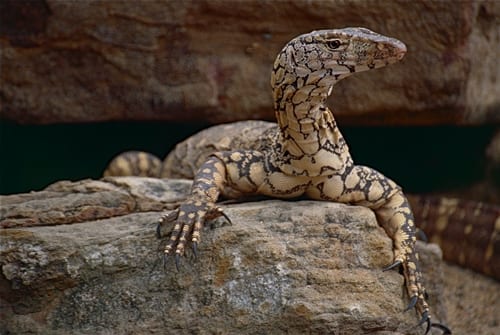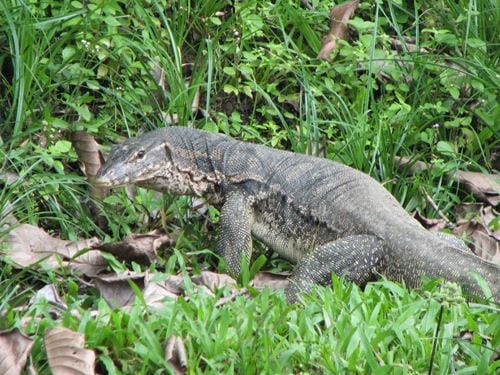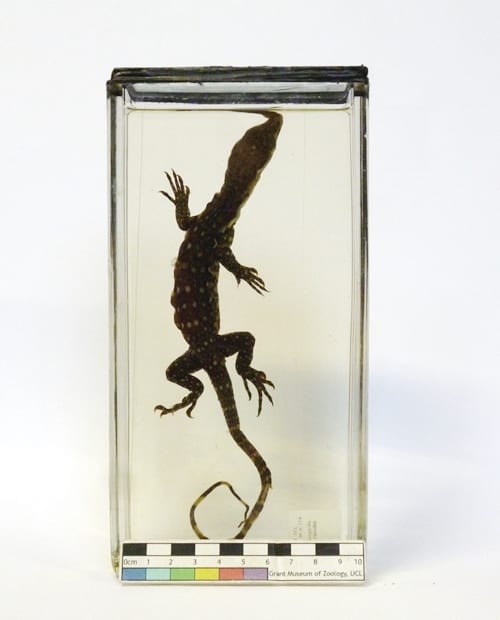Specimen of the Week 314: the Asian water monitor hatchling
By Will J Richard, on 27 October 2017
Hello folks! Will Richard here choosing another specimen for you. And this blog I’ve gone for a good all-rounder. A lizard that seems to be the second best at almost everything it does. The reptile equivalent of “and Garfunkel”…
**The Asian water monitor hatchling**
The largest lizard?
The Asian water monitor (Varanus salvator) is a carnivorous lizard native to South and Southeast Asia. Although females are markedly smaller, adult males occasionally reach three metres long and weigh over 50 kilogrammes, which makes them the second largest lizard alive today. Only Komodo dragons (V. komodoensis), also a kind of monitor lizard, can grow bigger.

Young Komodo dragon feeding. Image by Mats Stafseng Einarsen; via Wikimedia Commons; CC BY 2.5
The fastest lizard?
As their name suggests, water monitors are excellent swimmers. They tuck their legs flat against their flank and use their powerful tail to drive themselves forward, diving beneath the surface for up to half an hour. They are surprisingly fast runners too and could easily catch any of us who didn’t make the Olympic 100 metre final but aren’t, by any means, the fastest in their family. The perentie (V. giganteus – another monitor lizard) can reach speeds of over 40 kilometres an hour, and is probably the fastest lizard on earth.

perentie; image by Bernard Dupont; via Wikimedia Commons; CC BY 2.0
The deepest lizard?
Water monitors dig burrows, normally in river banks, in which they rest and sometimes lay their eggs. These self-excavated holes are usually about ten metres long and two metres deep. This sounds impressive, but is (again!) not quite as good as another varanid: the Australian yellow-spotted monitor lizard (V. panoptes) digs a spiral-shaped tunnel that ends in a chamber about 3.6 metres below the surface. This is believed to be the deepest nest dug by any vertebrate.

Australian yellow-spotted monitor lizard; image by Greg Hume; via Wikimedia Commons; CC BY-SA 3.0
The rarest lizard?
No. This is probably one title that Asian water monitors are happy to lose, if they are capable of feeling joy – perhaps a topic for another blog. Although many are killed for their meat and skin, they are still breeding over a huge area in apparently stable numbers and are not considered endangered. In contrast, the IUCN lists 185 squamate reptiles (lizards and snakes) as critically endangered and therefore in imminent danger of extinction. There are no monitor lizards currently on that list, though only 29 of the 58 described species have been formally assessed.

and for comparison: an actual Asian water monitor; image by Rob and Stephanie Levy; via Wikimedia Commons; CC BY 2.0
References:
Will Richard is Visitor Services Assistant at the Grant Museum of Zoology
One Response to “Specimen of the Week 314: the Asian water monitor hatchling”
- 1
 Close
Close



How fast can they swim?